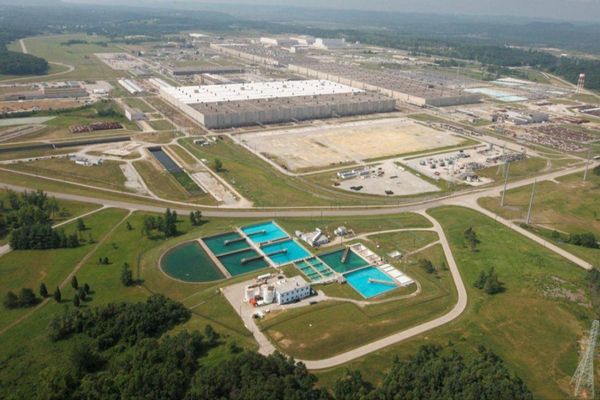Scientists say humans could see thylacines in fenced-off areas of the Tasmanian wilderness in a decade — close to 100 years after the species went extinct.
Thylacines, or Tasmanian tigers, were the largest carnivorous marsupial until 1936, when the last one in captivity perished at a Hobart zoo. They were declared extinct in the 1980s.
Now, a University of Melbourne research lab that has been working on the de-extinction of the Tasmanian tiger for the past 15 years has announced it has partnered with a US-based genetic engineering company to boost efforts to bring the marsupial back.
"The ultimate goal of this project is not to just bring back the thylacine, but to get to a point where it can be put back into its natural environment in Tasmania," University of Melbourne Professor Andrew Pask said.
Professor Pask, who heads the Thylacine Integrated Genomic Restoration Research (TIGRR) lab — and is described as the "leading marsupial evolutionary biologist and world's foremost Tasmanian tiger expert" — said "we've got the technology at our finger tips".
"There is no technology we need to bring an animal back that we don't already have".
So can they pull it off?
Scientists say they have never been in a better position.
Dr Pask's unit has already assembled the first complete genome of the Tasmanian tiger after using DNA from thylacines that had been preserved in alcohol.
Now that they have access to DNA editing technology, the next step is to turn the genome of the thylacine into a living animal.
Colossal Biosciences, which is based in Dallas, Texas, is already working on another major "de-extinction".
Colossal, which lists Australian actors Chris and Liam Hemsworth as "like-minded impact investors", says its "landmark de-extinction project" is the "resurrection" of the woolly mammoth.
"Or more specifically, a cold-resistant elephant with all of the core biological traits of the woolly mammoth," the company states on its website.
In a statement, Colossal chief executive, tech entrepreneur Ben Lamm, said "we take DNA from existing species that are the closest relatives, in the case of the thylacine it's the fat-tailed dunnart".
"We compare the genomes so we can get a better understanding of the genetic differences."
Dr Pask said once that is understood, "we go into the cells and start making edits … and essentially engineer a dunnart cell into an thylacine cell".
"We can then use reproductive technologies such as IVF to turn the cell into a whole living organism."
Unlike with the woolly mammoth, scientists have an advantage when it comes to growing a marsupial from conception to birth due to their small size and a short gestation period, he said.
"Thylacines give birth to babies that are not much bigger than a grain of rice, so growing the embryo in a test-tube or through a surrogate is much less challenging [for us] for a marsupial than a mammoth," Dr Pask said.
"We think the dunnart could give birth to a baby thylacine and once they are born, you can rear these animals on milk by recreating that artificial pouch environment".
It is hoped the project could also help other marsupials, like the koala, which are vulnerable to natural disasters like bushfire, which are becoming more common.
Scientists are collecting vulnerable species' tissue for their biobank, so if they ever went extinct, they might be able to bring them back too.
As for criticism of from those who accuse scientists of interfering in the natural order, Dr Pask has the following to say.
"When people say we are playing god, I say we do it all the time, we certainly played god when we exterminated the thylacine."
True believers say efforts better spent searching
There are those who don't believe the thylacine is extinct, and believe money and time would be better spent on investigating sightings in Tasmania and mainland Australia.
One of those people is Neil Waters, of the Thylacine Awareness Group Tasmania.
Mr Waters, a long-time believer, is convinced thylacines continue to exist in the Australian bush, posting images which he says proves they are out there, despite experts failing to agree.
"You've got to be out there to see it and I think with a bit more investigation we can prove the thylacine is still out there," Mr Waters said.
"The evidence keeps mounting and something needs to be done".
For American thylacine fan Heather Carey, the prospect of seeing a living Tasmanian tiger in 10 years would be a dream come true
"They're really unique, they look really cool, and I think it's amazing that they are related to kangaroos," Ms Carey said.
The 19-year-old first started learning about the marsupial five years ago when she bought a thylacine plush toy from a garage sale in Ohio, and said she had been passionate about the species ever since.
While she waits for science to bring back the thylacine, she is content to settle for the next best thing.







